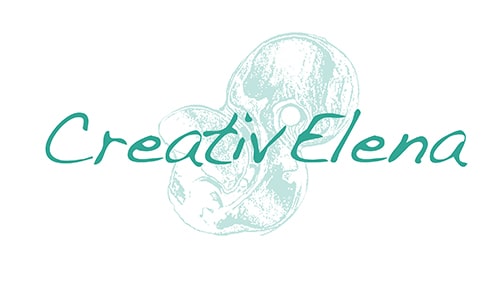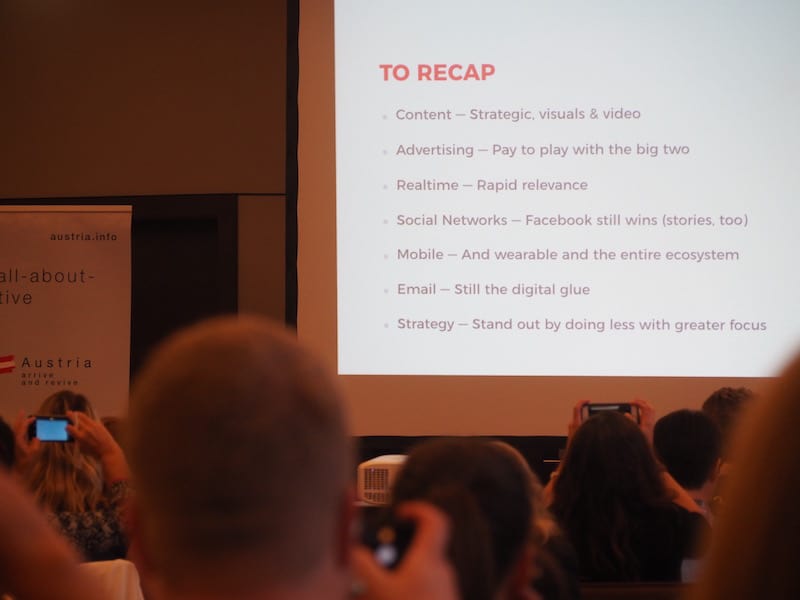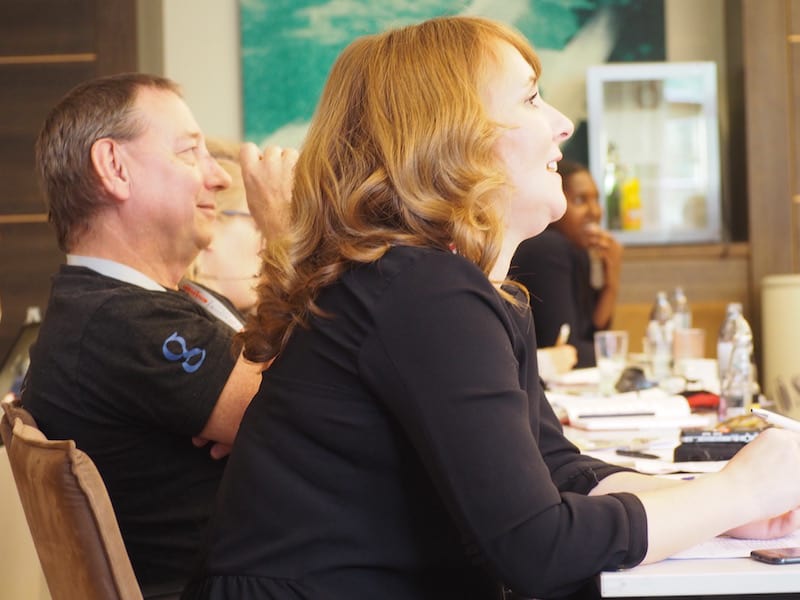“In the words of Charles Darwin: Survival is for those who are ‘most responsive to change’. We are a kind of living history when it comes to communication technology: Over the past 20 years, things have been changing constantly”, says Nick Westergaard, and smiles. At his own exasperation, that is. Of having recently visited the “Museum of Broadcasting History” based in Chicago, Illinois, and finding that “what I remember vividly, is now a piece in a museum! Can you believe it?! My own children certainly laugh at me”, he continues, chuckling. But many of us in the audience nod, and let out an audible sigh. Truth be told: Only 20 years ago, the world of communication was an entirely different story, let alone further back.
So how to embrace the days we live in, and ready ourselves for remaining smart even in the future?
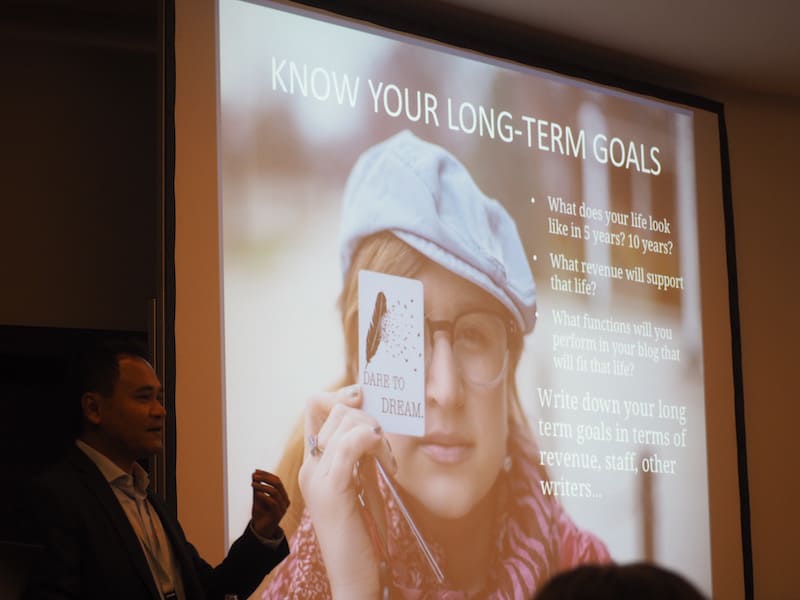
“Know your long-term goals” is one answer, as proclaimed by Keith Jenkins, CEO of iambassador, at ‘The Social Travel Summit’ in Kitzbühel, Austria.
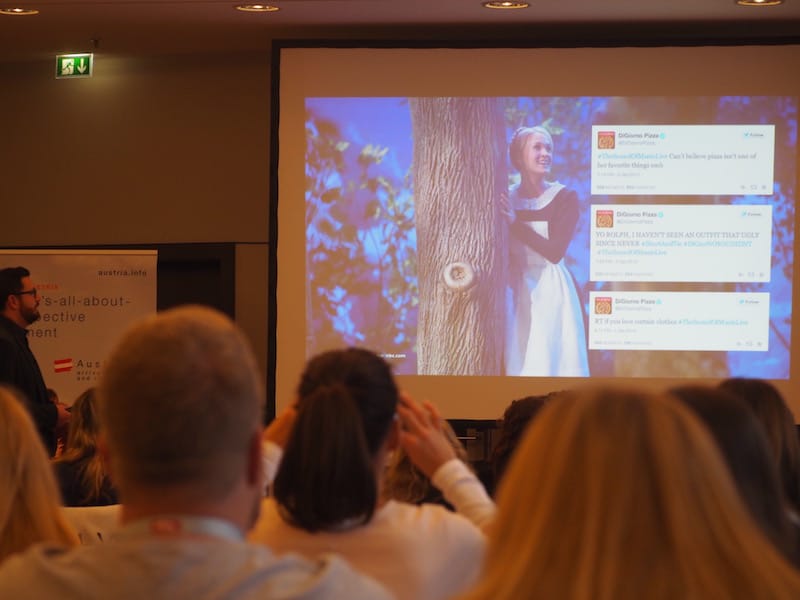
Usual or unusual? An image of the “Sound of Music” on Twitter causes either reverie, or negative reactions to the clothing style of the main actress: As with any type of communication, it very much depends on the context, as well as on the audience receiving it.
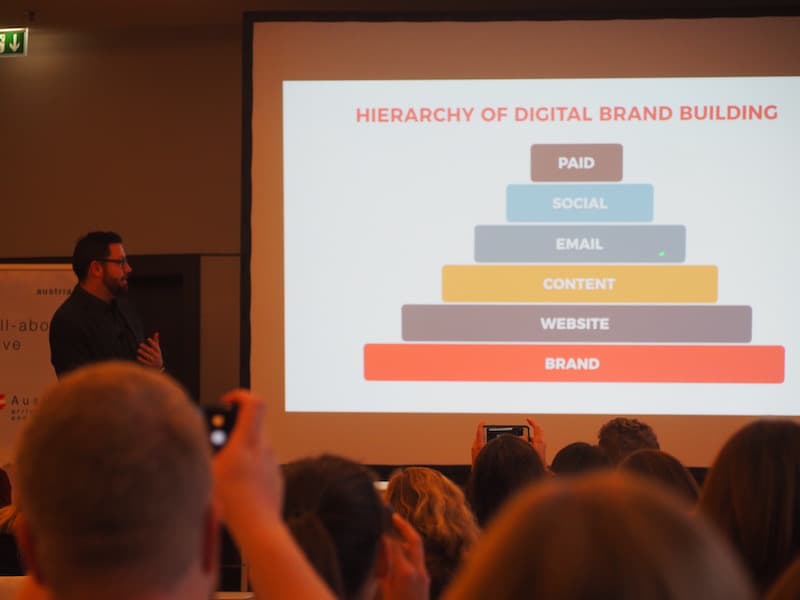
Nick Westergaard also has this for us: An interesting chart about the “hierarchy of digital brand building”. Agree?
Every year, the so-called “Social Travel Summit”, run by a team of dedicated communication experts, brings together passionate travel professionals, addressing some of the most important issues in digital travel publishing & the travel industry.
Two days’ worth of packed conference sessions, impromptu corridor talks, inspiring coffee breaks & notorious after-parties provide a focal point for all of us creative minds to put our heads together and actively think about the future, based on what has been and is happening now in the digital influencer sphere. I have always loved participating in ‘The Social Travel Summit’ for these very reasons, and #STSKitzbuehel being my third such summit, I fondly remember having met our first speaker, Nick Westergaard, already at #STSLeipzig, back in the spring of 2014. He there gave a similar talk about the “7 Trends to Watch out for“, and here is a useful recap for you:
- Cat content … well, CONTENT, continues to be a major trend. 80% of marketers use content marketing across all industries. The future will bring a so-called content shock, requiring us to be even better at content creation “that is strategic, visual, and video-focused. More isn’t always better. Sometimes more, is just more.” In the day and age of “Pinterest-ification”, videos and visuals give the most valued engagement & reach, with the future of search being pictures over keywords. Visual content is 40x times more likely to get shared!
- Advertising … has not only changed dramatically over the past 20 years, but also reached a certain “reachpocalypse”, as Nick calls it. Most of the money is going to Google, and Facebook. There is no one size fits all approach. Keep it narrow. Don’t just broadcast – narrowcast! The POEM formula is the go-to formula in this case, meaning to invest in paid, owned, and earned media. His piece of advice is to “have something going in each one of those categories”.
- Realtime & rapid relevance: There has been a 330% growth in Facebook live streams since their rollout in 2016, what with daily watch time increasing more than four times in just over a year. What you need is not just a video strategy, but some kind of live video strategy! For this, Nick’s advice is to tie content creation to things people already talk about, and make for “rapid relevance”: Reach, relevance, and speed! However much smartness this requires, it is definitely worth looking at, he concludes.
- Mobile … is less about what we have, than about what we are able to do. Say we spend five hours a day on our mobile devices. 50% of videos we consume is via mobile devices. Google commands 94% of mobile search traffic, and 95% of mobile ads. The question to ask yourself is this: Is your content ready for this? Make sure you have a fast-loading, mobile-responding site. 53% of mobile pages are abandoned if they take longer than three (!) seconds to load.
- Email: By 2020, 3 billion people will use email. 205 billion emails are sent every day. The ROI is massive … 72% of consumers prefer email as their main source of business communication. Keep it simple, responsive, as email is and continues to be, the digital glue of our relationships.
- Strategy: “Slow down, avoid the me-too marketing traps, and apply more focus on what you, and you alone, can offer …”.
“Infinite possibilities require finite strategies. Instead of doing everything, we have to think about what makes the most sense – and slow down for it.” (Nick Westergaard, The Social Travel Summit in Kitzbühel, Austria).
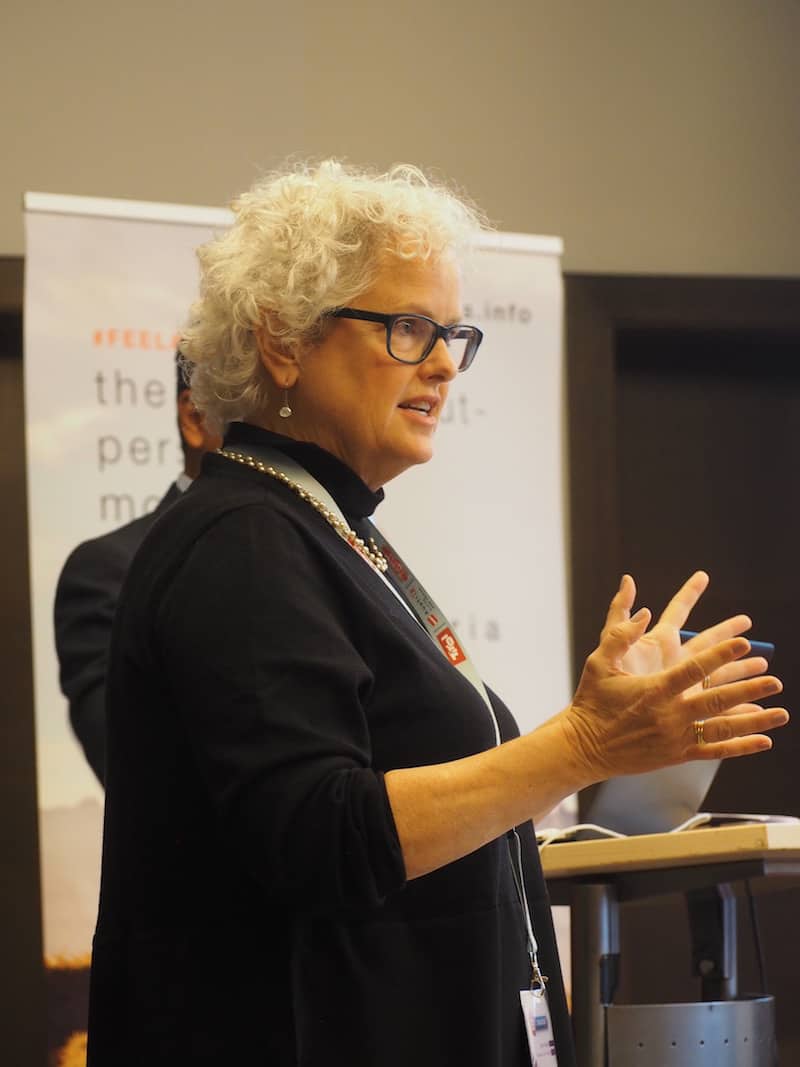
… and so is the quality of our speakers, in this case Janice Waugh aka Solotravelerworld.com who talks to us about business planning, strategic thinking, and personal success formulas.
Another insight I’d like to share with you is a presentation by fellow Austrian Marion Vicenta-Payr called “Algorithms are killing us”, followed by seven steps to implement a successful (paid) Social Media campaign.
Marion’s talk (@MarionVicenta) zooms in on the fact that all of us “rely on platforms that we simply cannot control“. Even if we keep showing reach over absolute number of followers, organic reach is going down, likely even headed to zero in due time. According to her, there are three possible ways to go:
- “Pay-To-Play” strategies, which are designed to build paid reach by “narrowcasting” through targeting, testing and learning. They can be a good introduction to the field of paid Social Media campaigns.
- Focus on quality: In terms of platforms such as Facebook, this means that you should share content that makes users stay longer on Facebook, using formats they like: Live streaming, video content, instant engagement, articles & links demonstrating a quality approach. Native Facebook videos are liked and shared much more, so make sure your content is shareable. You can, for instance, use browser plugins to invite people who engage with your content to like your page. Another idea is to create groups to engage with your most important target group. Do not be put off if something takes longer to work, or simply does not work very well at all: Algorithms, Marion concludes, are changing every week!
- Last but not least, think about re-allocating resources to your owned channels, i.e. your own website, your own blog, etc.
Lynsey Sweales (@LynseySweales) then presents us with the following steps to implement a successful, paid social media campaign:
- “Work backwards“: Start with your business objectives, then put money, time, and stats to allocate resources for a plan ahead.
- “What is the competition doing?” You can use tools to find out more, such as AdEspresso by Hootsuite, a tool for competitor insight. Or SEMRush, Lynsey mentions.
- “What are the most appropriate channels for you?” Test, learn, and maximise those channels. Publish posts organically, promote the post targeting only people who haven’t seen it. Always give a call to action for your users!
- “What are your resources?” Think in terms of your personal strengths, but also your networks, your supporters, your friends and your business background.
- “Measure“: Use Google URL Builder on every post, and review Google Analytics at least once a week! Set up goals for transaction, so you can fully measure your performance. Measure and watch your reach as well as your engagement.
- “Remarketing“: By adding a simple code to your website, you can open up a whole new area of attracting and engaging your audience. Think of a user that comes to your website, for instance. When they then log on to Facebook, they will see an ad of the same company (your company) there again, a strategy that ties in with remaining visible throughout the entire customer journey.
All goals ever formulated, Lynsey emphasises, should be SMART: Specific, measurable, achievable, realistic, and timely. Thank you both Marion & Lynsey, for this interesting presentation!
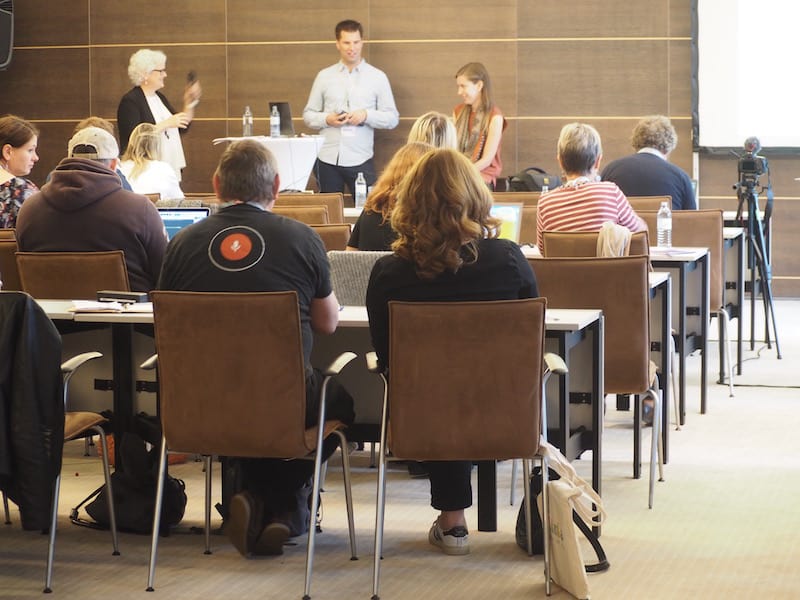
Last but not least, I would like to share with you insights from one of my favourite presentations this year: Erik aka “AroundTheGlobe.nl” and his insights on SEO management!
Erik van Erp, who I’ve enjoyed listening to on more than one occasions already, starts off his presentation about Search Engine Optimisation, with three important questions:
- Start with: “Where do you want to be found in two years from now?”
- Then, ask yourself: “Is there a market for it? And is it big enough?”
- Thirdly: “Can you make money off these topics?”
Say you publish about food, for instance, Erik continues using, Audrey Bergner’s website “ThatBackpacker.com” as an example. Culinary itineraries, he argues, may be more easy to monetise than food in general. He also goes on to say that “if you have less than 20.000 visitors to your website per month, you need to step up your game now. 20.000 to 50.000 visitors will keep you relatively safe, but not for long.”
“With more than 100.000 visitors a month, you will be safe for the next two to three years.” And: “The majority of your audience is there for the first time ever. The ‘our readers’ concept is slightly askew in terms of pure analytics.”
Generally speaking, all of us in the audience are hooked to Erik’s words, and I am pleased to give you the following, short run-down of the essence of his presentation, and tips for us:
- Take a careful look at your site structure: Your main categories are the most important things you want to rank for. Search engines crawl your website from left to right, so be sure you put topics that are important in the top left corner first (i.e., to keep using Audrey’s website as an example: “Home – About – Destinations – Travel Tips”, in that order).
- Don’t use too many tags on your website! A few, like two to three, is enough. The rest should go into your categories (which shouldn’t be the same as tags).
- By 2020, 50% of all searches will be voice-based (Source: ComScore). 30% will be done without a screen by 2020. The issue is that there will only always be one answer to a voice search, and you want to be there.
- Find (and avoid) “bad” content: Check your SEO settings, enable YOAST plugin for your Wordpress site, etc. Push “artsy creative titles” to the middle of your article, and put the YOAST plugin’s suggestion for an SEO friendly article to the top! “Bad content” is usually thin content, sometimes also sponsored posts, old posts, or non-relevant posts (be more topical).
- Think about keywords, but more in terms of topics. Depending on the market you write for, you need to adapt the keywords. If you want to really influence what people see, you need to address a whole bulk of keywords.
- Develop interesting case studies: Erik shared his example of creating an “SEO case study trip to Emilia Romagna”, where the itinerary was based entirely on SEO keywords he had previously found. He then wrote an article on Bologna and also connected it to other articles in other Italian regions, such as Lombardia, again mainly from a practical point of view: Because it is cheaper for his (language) market, the Dutch travellers, to travel to Milan rather than Bologna. Both articles pushed themselves up in search results, ranking really high one year after its publication, i.e. in the following travel season, what with 10.000 to 20.000 visitors a month just on this article, showing up in the top 10 search results on Google for Bologna.
“Even if you create awesome content, you need to collaborate in order to get exposure.” (Erik van Erp, The Social Travel Summit, Kitzbühel, Austria).
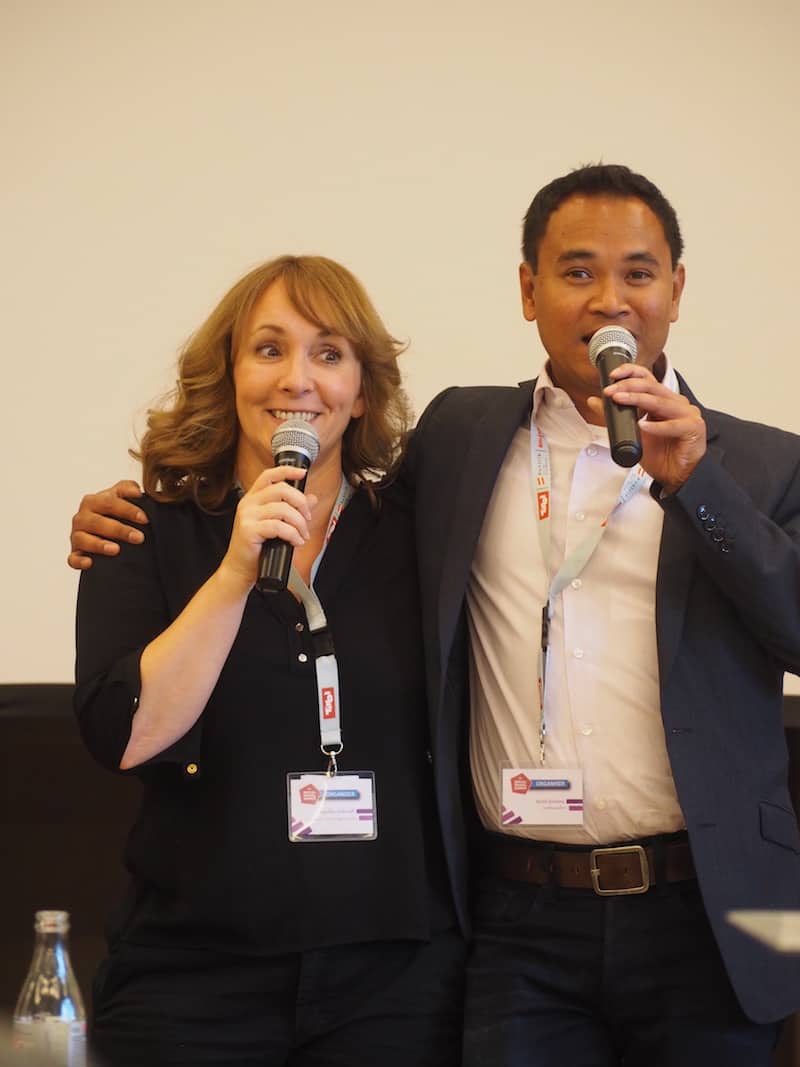
We agree it’s one of the most interesting facts to know more about the nuts & bolts of your website, i.e., your business right? Angelika Schwaff, and Keith Jenkins here, both hard working in the organising committee of the “Social Travel Summit”.
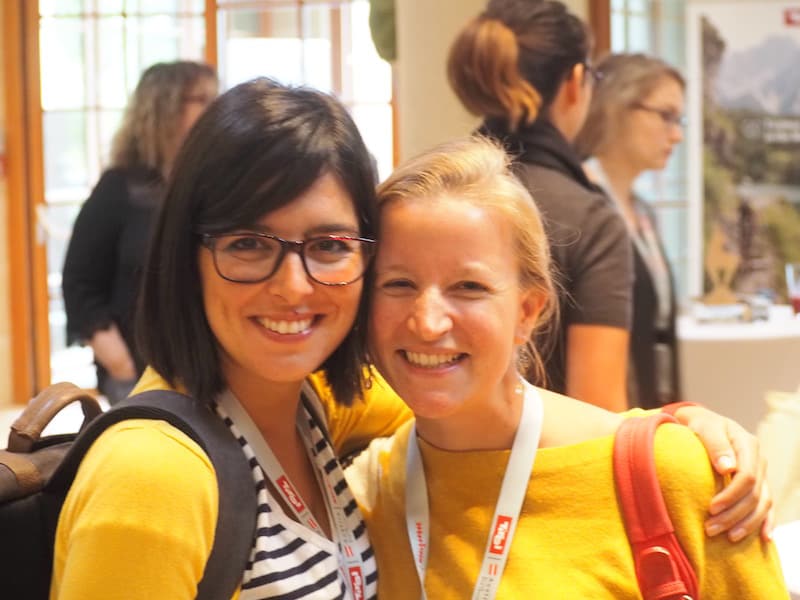
Loved my time meeting you again too, dear Gemma @Costa Brava Tourism Board : Can’t wait to be back there sometime soon again, too!

Stay tuned for my next post up here talking more about this year’s “Social Travel Summit Think Tank”, and how I got to be an essential part of it by being asked to moderate a session on “going beyond content”, and helping travel publishers & the travel industry to share knowledge on how to work together in fresh, creative ways.
Check out all of my #STSKitzbuehel photos here:
… and don’t miss watching our happy #STSKitzbuehel Video either, both fun & informative:
What is your opinion about all of the above trends & developments?
